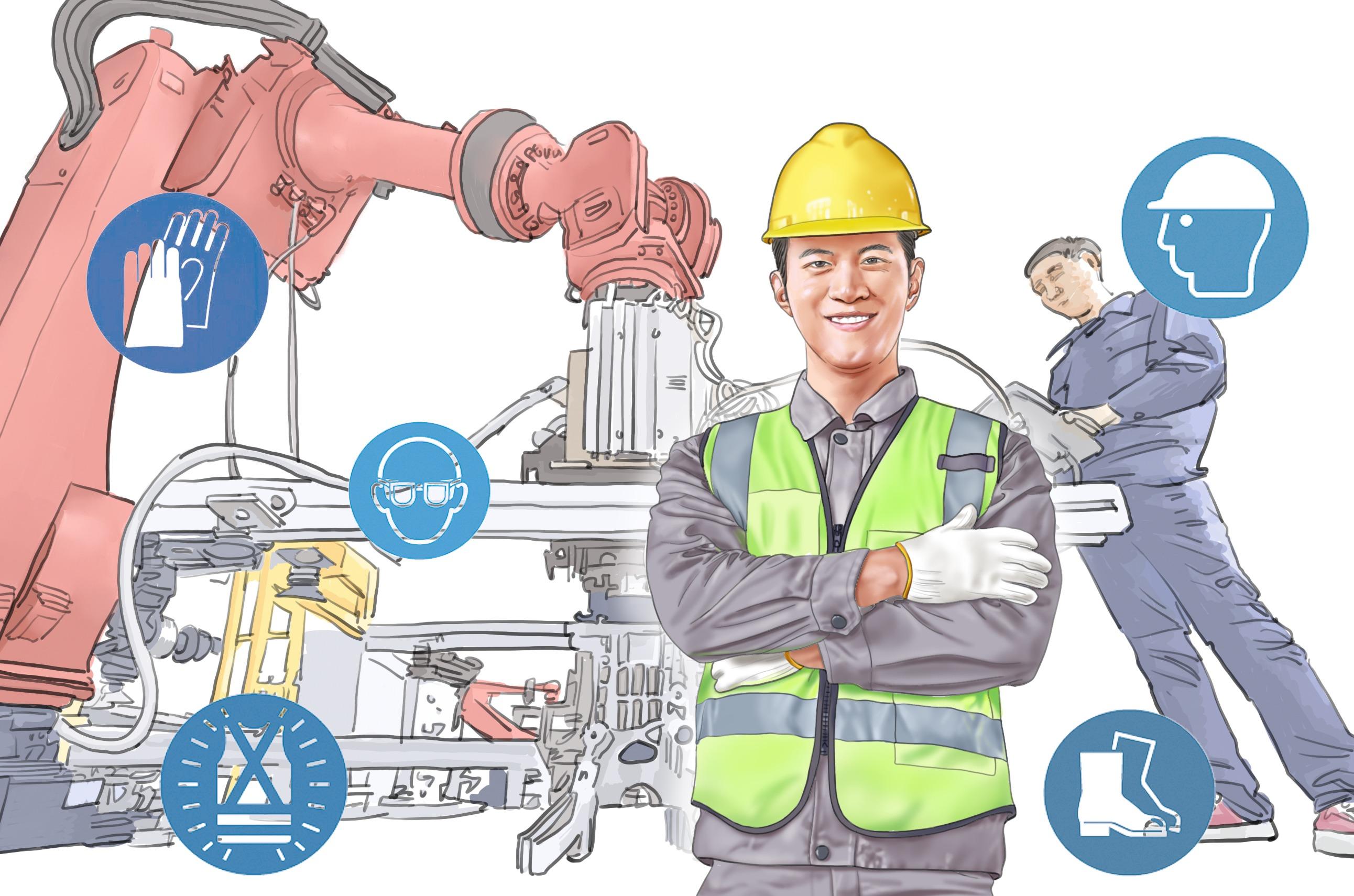 (JIN DING / CHINA DAILY)
(JIN DING / CHINA DAILY)
Every year, some 2.9 million women and men around the world succumb to work-related accidents or diseases — that's more than 8,000 deaths every single day — and at least 402 million people suffer from non-fatal occupational injuries. The toll is enormous in terms of personal tragedy and hardship. And it comes with a huge economic loss. It is estimated that occupational accidents and diseases lead to a 5.4 percent loss of annual global GDP.
Safety and health at work concern everyone. Every accident at work and every occupational disease can be prevented. Prevention is the key. Since 2004, the International Labour Organization and its Chinese tripartite constituents have been organizing commemoration events on World Day for Safety and Health at Work on April 28 to build awareness among every enterprise and worker on the importance of building a safe and healthy working environment at every workplace.
The participation of both employers and workers through social dialogue and workplace cooperation is vital if a sound culture of prevention in occupational safety and health is to be created
A safe and healthy working environment is so important that in June 2022 the ILO took a historic step when it added a safe and healthy working environment to its Fundamental Principles and Rights at Work.
Why does this matter?
It matters because occupational safety and health can now no longer be viewed as an optional extra. All of the ILO's 186 member states are now obligated to respect, promote and achieve a safe and healthy working environment as a fundamental principle and right at work, irrespective of whether they have ratified either of the ILO's conventions relating to occupational safety and health.
This is significant for several reasons. First and foremost, it recognizes that every worker has the right to be protected from hazards and risks that can cause injury, illness or death in the workplace.
By making occupational safety and health (OSH) a fundamental right, the ILO is sending a clear message to governments and employers of all countries that they must take responsibility for providing a safe and healthy working environment for all workers.
When workers feel safe and healthy in their workplace, they are likely to be more productive and efficient. This can benefit workers, employers as well as the wider economy. Conversely, when workers are injured or become ill due to workplace hazards, it can have a significant negative impact on productivity and economic growth.
In China, progress on occupational safety and health is being made on many fronts. China has ratified six OSH-related international labor conventions, including the Occupational Safety and Health Convention, 1981 (No. 155), which became a fundamental convention in 2022. China has made remarkable progress on occupational safety and health over the last two decades. Between 2005 and 2021, total workplace fatalities declined by 83 percent, and those in the coal mining sector were down by 98 percent. This shows what can be achieved when there is a strong commitment by governments and social partners.
For occupational safety and health to become a daily reality for all workers, it must be addressed alongside the ILO's other fundamental principles and rights at work. These relate to the right to organize and collective bargaining, the elimination of forced and child labor as well as ending discrimination in the world of work. These fundamental principles and rights at work are an important part of the labor provisions in most of the free trade agreements concluded in recent years, such as the Comprehensive and Progressive Agreement for Trans-Pacific Partnership.
The participation of both employers and workers through social dialogue and workplace cooperation is vital if a sound culture of prevention in occupational safety and health is to be created. Trade unions have an important role to play in this regard, helping voice concerns of workers as well as training them in basics of OSH. Also, enterprise-level OSH committees allow workers and employers to jointly address occupational safety and health issues.
A safe and healthy working environment is now a fundamental right for each and every worker. Governments, employers, trade unions as well as companies at every level of the supply chains must work together to make this right a reality.
We can do so through shared commitment, joint efforts and by adopting a holistic approach. One which recognizes and promotes all fundamental workers' rights and helps deliver social justice and decent work for all.
The author is country director of the International Labour Organization in China and Mongolia.
The views do not necessarily reflect those of China Daily.


